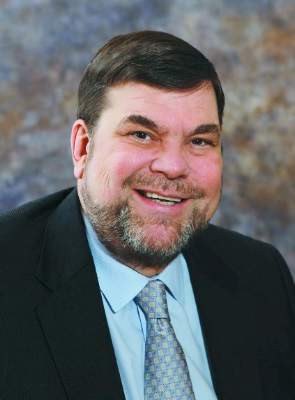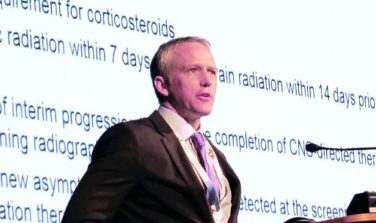It seems like only yesterday we were celebrating the elimination of the Medicare sustainable growth rate and the continuation of “global periods.” Now we are facing the elimination of the global payment periods again, and if we don’t bill the proper CPT code (99024) for our follow-up visits, during an upcoming survey period, it will indeed be a challenge for the specialty.
You may not know it, but there is payment for follow-up visits – global periods – built into codes dermatologists frequently use . As you can see, a large part of our specialty is vulnerable, from destruction of actinics and warts, to malignant and benign excisions, to destructions, to reconstructive surgery. This is real money, about a billion (yes, with a “b”) paid to dermatologists every year in Medicare alone.
These embedded visits vary from one (actinic destruction) to five (full thickness graft of the nose) and make up a major part of your reimbursement. As part of MACRA (Medicare Access and CHIP Reauthorization Act), the CMS was directed to investigate the validity of these embedded visits.1
The CMS has decided to complete this data gathering by how often the CPT code 99024 is billed.
I am not worried that we don’t provide these visits. I know we do, but I am terribly worried that we won’t correctly report these visits and won’t get credit for them.
The problem is that 99024 pays nothing, it is simply a notation to indicate that the patient was seen in follow up. Since it pays nothing, and since billing anything has an inherent expense, and since 30% of dermatologists are still on paper claims, most dermatologists have never used this code and may not start. In addition, groups of under 10 physicians are not required to report, but can, and you must! Seventy percent of our members are in groups of under 10. That means there will be no data collected on most of these codes, which are almost all performed by dermatologists, the great majority of the time.
Let me say it clearly here: If you do not start filing 99024 every time you see a patient in follow-up (and perhaps for telephone follow-ups), the amount you are paid to perform the original procedure will be cut by 30%-75%. Since the CMS will erroneously think you are not seeing these follow-up patients, they will pull these embedded payments out of the codes. You will have to start billing patients (think additional copays and deductibles) for every suture removal and wound check visit.
Data on 99024 will be collected in only nine states (Florida, Kentucky, Louisiana, Nevada, New Jersey, North Dakota, Ohio, Oregon, and Rhode Island). It will start July 1 and no one knows how long it will continue.
So, start preparing. You will not be penalized for adding this nonpaying code to every follow-up when you do not bill an evaluation and management code. I note that one electronic medical record vendor (Modernizing Medicine) has already started populating its bills with 99024. Good for them! You must report follow-up visits no matter the size of your practice. Report early and report often. Your future depends on it.
Common procedures on which the CMS is collecting postoperative visit data
10040 Acne surgery
10060 Drainage of skin abscess
10061 Drainage of skin abscess
10120 Remove foreign body
10140 Drainage of hematoma/fluid
10160 Puncture drainage of lesion
10180 Complex drainage wound
11200 Removal of skin tags <w/15
11400 Exc tr-ext b9+marg 0.5 cm<
11401 Exc tr-ext b9+marg 0.6-1 cm
11402 Exc tr-ext b9+marg 1.1-2 cm
11403 Exc tr-ext b9+marg 2.1-3cm/<
11404 Exc tr-ext b9+marg 3.1-4 cm
11406 Exc tr-ext b9+marg >4.0 cm
11420 Exc h-f-nk-sp b9+marg 0.5/<
11421 Exc h-f-nk-sp b9+marg 0.6-1
11422 Exc h-f-nk-sp b9+marg 1.1-2
11423 Exc h-f-nk-sp b9+marg 2.1-3
11440 Exc face-mm b9+marg 0.5 cm/<
11441 Exc face-mm b9+marg 0.6-1 cm
11442 Exc face-mm b9+marg 1.1-2 cm
11443 Exc face-mm b9+marg 2.1-3 cm
11601 Exc tr-ext mal+marg 0.6-1 cm
11602 Exc tr-ext mal+marg 1.1-2 cm
11603 Exc tr-ext mal+marg 2.1-3 cm
11604 Exc tr-ext mal+marg 3.1-4 cm
11606 Exc tr-ext mal+marg >4 cm
11621 Exc s/n/h/f/g mal+mrg 0.6-1
11622 Exc s/n/h/f/g mal+mrg 1.1-2
11623 Exc s/n/h/f/g mal+mrg 2.1-3
11640 Exc f/e/e/n/l mal+mrg 0.5cm<
11641 Exc f/e/e/n/l mal+mrg 0.6-1
11642 Exc f/e/e/n/l mal+mrg 1.1-2
11643 Exc f/e/e/n/l mal+mrg 2.1-3
11644 Exc f/e/e/n/l mal+mrg 3.1-4
11646 Exc f/e/e/n/l mal+mrg >4 cm
11750 Removal of nail bed
11765 Excision of nail fold toe
12031 Intmd rpr s/a/t/ext 2.5 cm/<
12032 Intmd rpr s/a/t/ext 2.6-7.5
12034 Intmd rpr s/tr/ext 7.6-12.5
12041 Intmd rpr n-hf/genit 2.5cm/<
12042 Intmd rpr n-hf/genit2.6-7.5
12051 Intmd rpr face/mm 2.5 cm/<
12052 Intmd rpr face/mm 2.6-5.0 cm
13101 Cmplx rpr trunk 2.6-7.5 cm
13121 Cmplx rpr s/a/l 2.6-7.5 cm
13131 Cmplx rpr f/c/c/m/n/ax/g/h/f
13132 Cmplx rpr f/c/c/m/n/ax/g/h/f
13151 Cmplx rpr e/n/e/l 1.1-2.5 cm
13152 Cmplx rpr e/n/e/l 2.6-7.5 cm
13160 Late closure of wound
14020 Tis trnfr s/a/l 10 sq cm/<
14021 Tis trnfr s/a/l 10.1-30 sqcm
14040 Tis trnfr f/c/c/m/n/a/g/h/f
14041 Tis trnfr f/c/c/m/n/a/g/h/f
14060 Tis trnfr e/n/e/l 10 sq cm/<
14061 Tis trnfr e/n/e/l10.1-30sqcm
14301 Tis trnfr any 30.1-60 sq cm
15100 Skin splt grft trnk/arm/leg
15120 Skn splt a-grft fac/nck/hf/g
15240 Skin full grft face/genit/hf
15260 Skin full graft een & lips
15732 Muscle-skin graft head/neck
15734 Muscle-skin graft trunk
15823 Revision of upper eyelid
17000 Destruct premalg lesion
17004 Destroy premal lesions 15/>
17110 Destruct b9 lesion 1-14
17111 Destruct lesion 15 or more
17260 Destruction of skin lesions
17261 Destruction of skin lesions
17262 Destruction of skin lesions
17263 Destruction of skin lesions
17270 Destruction of skin lesions
17271 Destruction of skin lesions
17272 Destruction of skin lesions
17273 Destruction of skin lesions
17280 Destruction of skin lesions
17281 Destruction of skin lesions
17282 Destruction of skin lesions
Dr. Coldiron is a past president of the American Academy of Dermatology. He is currently in private practice, but maintains a clinical assistant professorship at the University of Cincinnati. He cares for patients, teaches medical students and residents, and has several active clinical research projects. Dr. Coldiron is the author of more than 80 scientific letters, papers, and several book chapters, and he speaks frequently on a variety of topics. Write to him at dermnews@frontlinemedcom.com .
References
1. Medicare Access and CHIP Reauthorization Act of 2015, HR 2, 114th Cong, 1st Sess (2015) .




